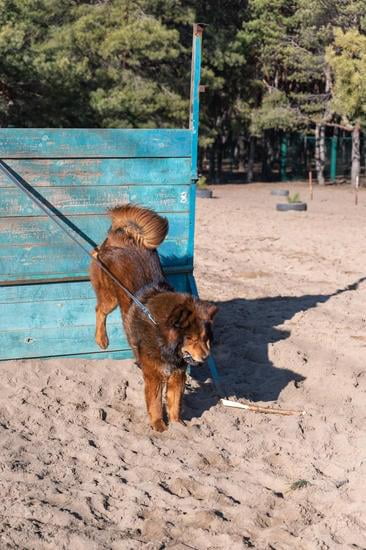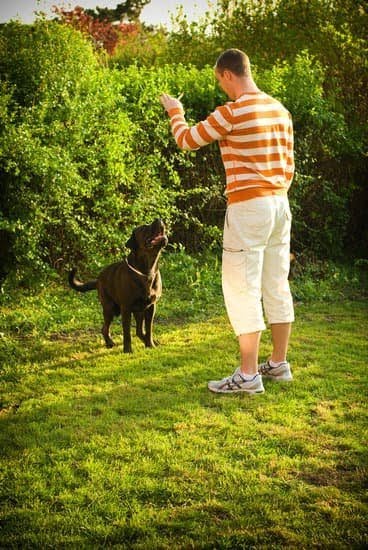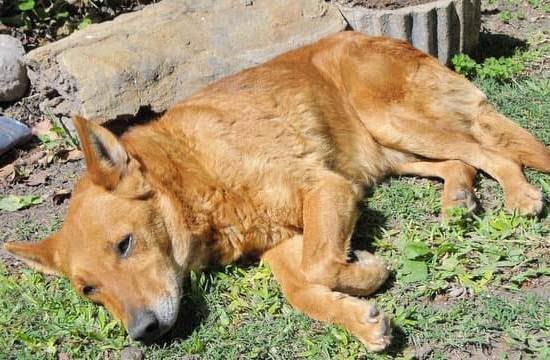Potty training is a crucial step in ensuring a well-behaved and happy dog. Not only does it promote good hygiene practices, but it also helps establish a strong bond between owners and their furry companions. Knowing when to start potty training can be a daunting task for many dog owners, with various factors to consider.
In this article, we will explore the ideal age to begin potty training, the behavioral and physical signs to look out for, as well as effective methods for establishing a routine. By understanding these essential elements of potty training, you can embark on this journey with confidence and set your pup up for success.
It’s important to note that starting potty training at the right time is crucial for your dog’s overall development. The optimal age range for beginning this process may vary depending on various factors such as breed, size, and individual personality traits. We’ll delve into these considerations in more detail later in the article. Additionally, understanding the behavioral indications that suggest your dog is ready for potty training can help you tailor your approach to their specific needs.
To successfully potty train your dog, it is important to establish a consistent routine that they can follow and understand. This routine helps reinforce positive behaviors and assists in their learning process. We will discuss how implementing a regular schedule plays a significant role in potty training dogs and examine different techniques that can be utilized based on your dog’s breed and personality.
Embarking on the journey of potty training may come with its own set of challenges. However, with patience, dedication and the right approach, these obstacles can be overcome effectively. We will address common challenges that arise during the process and provide practical tips and solutions to tackle them head-on.
By arming yourself with knowledge about when to start potty training in dogs and implementing appropriate methods tailored to their individual needs, you can ensure a smooth transition into this essential aspect of their lives. Let’s dive deeper into the world of potty training and set your furry friend up for success.
The ideal age to start potty training
The ideal age to start potty training for dogs can vary depending on various factors such as breed, size, and individual development. While there is no one-size-fits-all answer, it is generally recommended to begin potty training between the ages of 12 and 16 weeks. This is because during this time, puppies have better bladder control and cognitive abilities to learn the desired behavior.
One important factor to consider is a dog’s physical ability to hold their bladder and bowel movements. Puppies younger than 12 weeks may not have developed enough muscle control to effectively hold their urine or feces for long periods. On the other hand, starting potty training too late might result in bad habits being formed.
Aside from physical ability, it’s also crucial to assess a dog’s cognitive development when determining the ideal age for potty training. Puppies between 12 and 16 weeks start developing an understanding of cause-and-effect relationships and are more receptive to learning. They can begin associating going outside with eliminating waste and start establishing the connection.
To determine if your puppy is ready for potty training within this age range, it’s essential to watch out for specific behavioral signs. These signs include sniffing around, circling or pacing in a particular area, barking or whining restlessly, or turning in circles before squatting. These behaviors indicate that your puppy is aware of their need to eliminate and are trying to find an appropriate spot.
Ultimately, every dog is unique, so it’s important to be adaptable in your approach. By considering both physical signs of readiness and behavioral indications, you can gauge the optimal time frame for beginning potty training with your furry friend.
Behavioral signs to look for
Consistent elimination
One of the behavioral signs to look for when determining if a dog is ready for potty training is consistent elimination. This means that the dog consistently goes to the bathroom at predictable times and in predictable places. If you notice that your dog tends to eliminate in specific areas of your home or on walks, it may be a sign that they are ready for potty training.
Sniffing and circling
Another behavioral indication that suggests a dog is ready for potty training is sniffing and circling behavior. Dogs often exhibit these behaviors when they are trying to find an appropriate spot to eliminate. If you notice your dog sniffing the ground or circling around before they go to the bathroom, it may be a good time to start potty training.
Alertness and restlessness
Dogs who are ready for potty training may also display alertness and restlessness when they need to go to the bathroom. They may become more active, pacing or wandering around, as if searching for something. Likewise, some dogs may whine or scratch at doors or windows when they have the urge to eliminate. These behavioral signs can serve as cues for you to initiate potty training.
It’s important to remember that every dog is different, and some dogs may exhibit these behaviors earlier or later than others. It’s essential to pay attention to your individual dog’s behavior and cues so that you can start potty training at the most opportune time for them.
Physical signs to consider
Physical signs to consider in a dog that may indicate it’s time to start potty training can vary depending on the individual dog. However, there are some common physical signs to look out for that can suggest a dog is ready to begin the potty training process.
Firstly, one physical sign to consider is if the dog is able to control their bladder and bowel movements for longer periods of time. Puppies typically have smaller bladders and may need more frequent trips outside, but as they grow older, they should be able to hold it for longer.
If you notice that your dog is consistently able to hold their bladder or bowels for several hours at a time, this may indicate that they are physically ready for potty training.
Additionally, if your dog starts showing behaviors such as sniffing around, circling, or squatting before eliminating, this could also be a physical sign that they are ready for potty training. These behaviors may indicate that the dog has an awareness of their need to eliminate and is trying to find an appropriate spot to do so.
Another physical sign to consider is if your dog starts displaying discomfort or restlessness when they need to go outside. They may paw at the door or whine/scratch at you in an effort to communicate their need. This behavior can be a clear indication that your dog understands the concept of going outside for elimination and is physically ready for potty training.
Overall, paying attention to these physical signs can help determine if your dog is ready to start potty training. It’s important to remember that each dog is different and may show these signs at different times. Patience and consistency are key when beginning the potty training process with your furry friend.
Establishing a routine
When it comes to potty training dogs, establishing a routine is crucial for success. Dogs thrive on consistency and structure, so creating a regular schedule helps them understand when and where they should eliminate. This section will explore the significance of a regular schedule in potty training dogs and how it aids in their learning process.
A consistent routine provides dogs with predictability, which is essential for effective potty training. By feeding your dog at the same times each day and taking them out for bathroom breaks at regular intervals, you are teaching them when to expect opportunities to go outside. This helps prevent accidents inside the house and encourages them to wait until they are let outside.
Setting specific times for bathroom breaks also allows you to monitor your dog’s behavior more effectively. You can observe their physical signs that indicate they need to eliminate, such as sniffing around or circling a specific area. By taking your dog out at these times consistently, you reinforce the association between going outside and relieving themselves.
To establish a routine, start by creating a schedule that aligns with your dog’s natural rhythms. Consider factors such as their age, breed, size, and activity level when determining how often they should be taken outside. Puppies generally have smaller bladders and require more frequent trips outdoors compared to adult dogs.
Additionally, keep track of when your dog typically eats or drinks water throughout the day. This will help you anticipate when they may need to eliminate after meals or after consuming larger amounts of water. By being proactive in taking them out during these times, you can reduce the chances of accidents occurring indoors.
| Routine Tips | Benefits |
|---|---|
| Feed your dog at consistent times each day. | Helps regulate your dog’s digestive system and creates a predictable schedule for bathroom breaks. |
| Take your dog out for bathroom breaks at regular intervals. | Teaches your dog when to expect opportunities to go outside and helps prevent accidents indoors. |
| Observe your dog’s physical signs that indicate they need to eliminate. | Allows you to anticipate when they may need to go outside and reinforces the association between going out and relieving themselves. |
Establishing a routine is an essential aspect of potty training dogs. It not only helps prevent accidents but also facilitates their learning process. By creating a consistent schedule, you provide structure and predictability for your dog, enabling them to understand when it’s appropriate to eliminate. Remember to tailor the routine based on your dog’s needs and be responsive to any changes in their behavior or lifestyle as they progress through the potty training process.
Choosing an appropriate training method
Understanding Different Potty Training Techniques
When it comes to potty training a dog, there are various methods that pet owners can utilize. However, it is important to choose a training technique that is most suitable for the specific breed and personality of the dog. Each dog may respond differently to different approaches, so it is crucial to find the method that works best for them.
Crate Training
One common potty training method is crate training. This technique involves using a crate or a confined space where the dog is kept when they are not being supervised. Dogs have a natural inclination to keep their living area clean, so they are less likely to eliminate in their designated space. It is important for the crate to be just big enough for the dog to stand up, turn around, and lie down comfortably.
Paper Training
Another popular potty training method is paper training. This approach involves teaching the dog to eliminate on an absorbent material such as newspaper or puppy pads placed in a specific area of the house. Gradually, the owner can move the papers closer towards an external door leading outside, encouraging the dog to eventually go outside to eliminate.
Bell Training
Bell training is a method that relies on teaching dogs to use bells hung from a doorknob or wall-mounted near a door as a way of signaling that they need to go outside. The idea behind bell training is to associate ringing the bell with going outside for potty breaks. With consistent practice and reinforcement, many dogs can successfully use this communication method.
Matching Techniques with Breed and Personality
It’s essential to consider a dog’s breed and personality when choosing a potty training method. For example, some breeds are highly intelligent and may respond well to more complex techniques such as clicker training or target training. On the other hand, certain dog breeds may have a predisposition for specific methods due to their instinctual behaviors.
Furthermore, understanding a dog’s personality can help determine which training technique may be the most effective. For example, some dogs may be more motivated by treats and food rewards, making positive reinforcement-based methods like crate training or paper training more suitable. Other dogs may respond better to praise and play as rewards, in which case bell training or other interactive methods may be more fitting.
Ultimately, choosing the appropriate potty training technique requires careful consideration of the dog’s breed traits and individual personality. It may also involve trial and error to find the method that resonates best with the dog’s learning style. By matching techniques with breed and personality, owners can create a comfortable and effective potty training experience for their furry friends.
Common challenges and how to overcome them
Potty training a dog can be a challenging task, and many owners may face obstacles along the way. Understanding these common challenges and learning how to overcome them is crucial for successful potty training. In this section, we will discuss some typical obstacles in potty training and offer practical tips and solutions to handle them effectively.
One common challenge that dog owners may encounter is accidents inside the house. It is important to remember that accidents are a normal part of the learning process, especially in the early stages of potty training. To address this issue, it is essential to closely supervise your dog at all times, especially when they are not confined to their designated potty area.
Consider using baby gates or a crate to limit their access to other parts of the house. Additionally, establish a consistent routine for taking your dog outside for bathroom breaks, and reward them with praise and treats when they eliminate in the appropriate spot.
Another challenge in potty training is inconsistency or lack of progress. Dogs thrive on routine, so it is crucial to establish a consistent schedule for feeding, watering, and bathroom breaks. A regular routine helps them understand when and where they should eliminate. If you are experiencing slow progress or inconsistent results, evaluate your routine and make necessary adjustments. Be patient with your dog and provide positive reinforcement whenever they make progress towards their potty training goals.
Lastly, some dogs may develop anxiety or fear related to going outside or eliminating in certain environments. This can hinder their potty training progress. To address this issue, gradually introduce your dog to different outdoor environments and praise them when they show signs of being comfortable and relaxed. If fear or anxiety persists, consult with a professional trainer or behaviorist who can provide specialized guidance based on your dog’s specific needs.
Overall, facing challenges during potty training is normal, but with patience and consistency, these obstacles can be overcome. By closely supervising your dog, establishing a routine, and providing positive reinforcement, you can effectively address common challenges in potty training and help your dog succeed in learning where and when to eliminate.
| Challenge | Tips & Solutions |
|---|---|
| Accidents inside the house | – Closely supervise your dog
|
| Inconsistent progress | – Establish a regular routine for feeding, watering, and bathroom breaks
|
| Anxiety or fear related to going outside or eliminating | – Gradually introduce your dog to different outdoor environments
|
Reinforcement and positive reinforcement
Positive reinforcement is a crucial aspect of potty training in dogs. It involves rewarding and encouraging desired behaviors to reinforce the dog’s understanding and motivation to continue using the designated potty area. By utilizing positive reinforcement techniques, owners can create a positive association for their dog, making the training process more effective and enjoyable for both parties.
One of the most effective methods of positive reinforcement in potty training is using treats. When the dog successfully eliminates in the appropriate spot, immediately reward them with a small, tasty treat and praise them with enthusiastic verbal cues such as “good job” or “good boy/girl.” This positive feedback reinforces that they have done something desirable and encourages them to repeat this behavior in the future.
In addition to treats, another form of positive reinforcement is providing physical affection. Dogs thrive on attention and affection from their owners, so lavishing them with praises, petting, and gentle strokes after they eliminate where they are supposed to can strengthen the association between proper elimination behavior and receiving love from their human companions.
It’s important to note that timing is crucial when it comes to positive reinforcement. The reward must be given promptly after the desired behavior occurs so that the dog associates it with their action. If there is a delay in delivering rewards or praise, it may confuse the dog about what they are being rewarded for, hindering their learning progress.
Ultimately, positive reinforcement serves as an effective way to communicate with your dog during potty training. It helps build trust and encourages good habits while creating a bond between you and your furry friend. By integrating positive reinforcement techniques into your training routine, you can enhance your dog’s learning experience and make potty training an enjoyable journey for both of you.
Avoiding mistakes
Potty training a dog can be a challenging task, but with the right approach and avoiding common mistakes, it can become a much smoother process. One of the most common mistakes dog owners make is not being consistent with their training methods. Consistency is key when it comes to potty training, as dogs thrive on routine and need clear expectations.
It is important to establish a schedule for potty breaks and stick to it every day. By being consistent, your dog will learn faster and have a better understanding of where they are expected to do their business.
Another mistake often made during potty training is punishing the dog for accidents inside the house. Remember that accidents are bound to happen during the learning process, especially in the early stages. Punishing your dog for these accidents will only confuse them and may create stress or fear around potty training.
Instead of punishment, focus on positive reinforcement. Reward your dog with praise or treats when they go in the appropriate spot outside or use proper indicators such as ringing bells by the door. Positive reinforcement encourages good behavior and helps reinforce their understanding of where they should be eliminating.
It is also important to avoid giving your dog too much freedom too soon. Allowing unrestricted access to the entire house can overwhelm and confuse them during potty training. Start by limiting their access to certain areas of the house where accidents could occur easily, such as carpeted rooms or bedrooms with soft surfaces. As they progress in their potty training, gradually expand their area of freedom until they have access to the whole house once they consistently eliminate outside.
By avoiding these common mistakes and following a consistent approach with positive reinforcement, you can greatly enhance your puppy’s learning experience and have a smoother potty training journey together. Remember that each dog learns at their own pace, so be patient and stay consistent with your training methods. With time, patience, and a positive attitude, your dog will become fully potty trained and enjoy a happier and more independent life.
Final thoughts and encouragement
In conclusion, potty training is an essential aspect of raising a dog and ensuring a clean and hygienic environment for both the pet and the owner. Starting at the right age and recognizing the behavioral and physical signs are crucial for successful potty training. Additionally, establishing a routine and choosing an appropriate training method that suits your dog’s breed and personality are key factors in achieving positive results.
While potty training can come with its fair share of challenges, it’s important to remain patient and consistent throughout the process. It’s normal for there to be setbacks and accidents along the way, but with perseverance, these can be overcome. Remember to reinforce good behavior through positive reinforcement, such as treats or verbal praise, which will further motivate your dog to learn and succeed.
Avoiding common mistakes like punishment or scolding will help create a positive learning environment for your furry friend. Instead, focus on gentle correction and redirection when accidents occur. By doing so, you will foster trust between you and your dog, making the potty training experience more enjoyable for both parties involved.
Frequently Asked Questions
Can an 8 week old puppy be potty trained?
Yes, an 8-week-old puppy can absolutely be potty trained. While it may seem challenging due to their young age, puppies are capable of learning and adapting quickly. The key to successful potty training at this age is consistency, patience, and positive reinforcement.
Establish a regular routine that includes frequent bathroom breaks, reward your puppy for eliminating in the appropriate spot, and supervise them closely to prevent accidents inside the house. With time and consistent training efforts, your 8-week-old puppy can learn to become reliably potty trained.
When should I take my dog out to pee and poop?
Understanding the appropriate times to take your dog out to pee and poop is crucial for effective potty training. Generally, you should take your dog out first thing in the morning after waking up as well as right before bedtime at night.
Additionally, it is essential to establish a schedule of regular bathroom breaks throughout the day, aiming for every two to three hours initially and gradually increasing the time intervals as your dog grows older and gains better bladder control. It’s also important to take your dog out shortly after meals or drinking water, after periods of play or exercise, and whenever you notice signs like pacing or sniffing indicating they may need to eliminate.
What dog breeds are hardest to potty train?
While all dogs can be potty trained with proper guidance and consistency, some breeds are often considered more challenging in terms of housebreaking. Small toy breeds or those bred for specific purposes like hunting can sometimes present difficulties in toilet training due to factors such as their high energy levels or independent nature.
Breeds such as Dachshunds, Chihuahuas, Bichon Frises, Jack Russell Terriers, and Afghan Hounds have been noted by trainers as potentially harder breeds to potty train because they may require extra effort in consistent reinforcement and management during the process. However, it’s important to note that individual temperament variations within each breed can also greatly influence how easily a particular dog can be potty trained.

Welcome to the blog! I am a professional dog trainer and have been working with dogs for many years. In this blog, I will be discussing various topics related to dog training, including tips, tricks, and advice. I hope you find this information helpful and informative. Thanks for reading!





